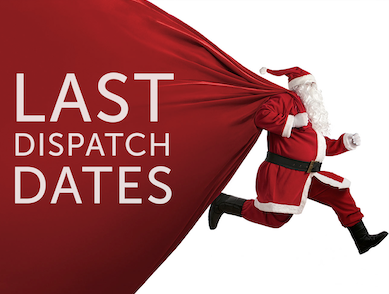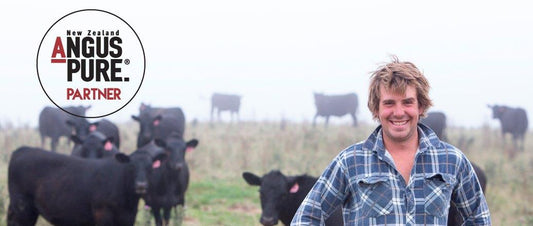Otupae Station is hard country nestled on the western side of the Otupae Range, bound by Ngamatea to the north and the Rangitikei River to the south.
It was during a trip over the ‘Gentle Annie’ during winter that I noticed them: hundreds of black cattle dotted across the hills for as far as the eye could see.
Cold winters at 1000m above sea level provide a testing environment for stock on the 8,640ha property (5,200ha is in grass), but careful planning by manager Gary Mead, who’s been there since 1982, has 2,709 Angus cows thriving. This number includes 2,159 mixed age cows and 550 R2 heifers.
The cattle have been straight black Angus for 16 years now and it’s working well. The 2,159 R3 and above mixed age cows start calving on October 28 and once their progeny are on the ground their path is very clear.
“We steer everything and put them all through one winter here on farm. Then the steers and surplus heifers are sold from October through to March, at 15 months old,” says Gary.
Due to the high cost of winter grass, nothing is finished on farm and Gary doesn’t believe in holding onto anything for a second winter.
All the progeny, except 550 replacement heifers, are sold on-farm to regular buyers. These numbers are usually around 870 steers and 320 surplus heifers.
“Since we’ve been focusing more on genetics, we now have regular buyers that create a good demand for these young cattle.”
When buying bulls, Gary doesn’t act alone. Otupae has been owned by the Williams family since the 1930s and for the past 15 or so years James Williams has been working alongside Gary on behalf of his family.
James has a keen interest in genetics and EBVs and is slowly bringing Gary around to the importance of bull buying based on good genetics rather than just phenotype. Otupae runs 70 bulls and buys 18-20 annually as there is quite a high turnover.
“Buying so many bulls might sound like a daunting task but for us it’s really quite simple. James does all the figures and we go to a sale with 30-40 bulls that we want to look at. Then I check those ones over for phenotype and from that we end up with about 25 to bid on,” says Gary.
Genetics that are above average are important, and James uses the online bull finder tool to ensure he’s getting bulls that fit his criteria.
“We can’t have little calves as it’s cold and miserable up here at calving time, so we keep birth weight above three and below six,” says James.
The 200- and 400-day weight (DW) figures must be at least average, but the 600DW not too high as they don’t want big stretchy bulls, and the mature cow weight has to be below the 600DW.
“Fat cover and intra-muscular fat are important indexes and, in addition, a bull must be well above average in the AngusPure Index as well as the Self Replacing Index. If the API isn’t there, I’m not interested,” says James.
For the past few years Otupae has been buying bulls from Te Mania, Mount Linton and Waitangi as these studs all fit Gary and James’ programme.
“The Mount Linton bulls are always very even, good quality animals. They’re used as yearlings so they look a bit like the All Blacks after a big game, but we can’t fault them. They suit our objectives,” says James.
Keeping a wary eye on phenotype is important as Gary believes the bulls with high percentile genetics have usually lost one or more of the important phenotype attributes.
“For example, feet are crucial to us. If a bull can’t walk around up here then it’s no good to me,” says Gary.
Last year Gary and James purchased 18 bulls that had the combination of figures and phenotype that they were looking for. The price averaged just over $6,000 each - pleasing for them considering the strong sale prices we saw in 2017.
Buying registered Angus bulls allows Otupae to tag progeny with AngusPure Source and Trace tags. The 870 steers are tagged annually in a move James sees as a marketing tool.
“We are supportive of Angus and are producing a genuine AngusPure product by high index bulls, so tagging our cattle opens us up to the opportunity for added value in the market,” says James.
For Gary, the premiums are just half of the reason to use AngusPure Source and Trace tags.
“From my perspective, I’m proud of the cattle we’re breeding. We feed them well and we look after them, so why wouldn’t we want them recognised as a premium article,” says Gary.
As far as feed is concerned, Otupae has a strict regrassing programme. Over three years, the pastures go from swedes, to kale, to new grass.
All the young cattle are block fed in mobs of 400-500 on kale for four months over the winter, supplemented with quality hay that is made on farm by contractors (150ha per year).
The swedes are block fed to hoggets in mobs of 3,500, being shifted every three to four weeks.
Otupae runs 20,600 Romney x Otupae ewes. The home bred Otupae ram has been developed over the years within an elite flock of 600 unregistered ewes, and is basically a Romney with a bit of Texel through it.
All lambs are finished where possible and the remainder are sold on-farm as store stock. Trials are underway with both rape and red clover to try to fatten a few more lambs in 2018.
There are of course still areas of undeveloped tussock country and 500ha is planted in pine trees, but Gary estimates you can get a tractor over around 80% of the property.
The pine trees are planted in blocks for forestry (in addition to pine tree shelterbelts) and consequently provide the grazing ground for the dry replacement heifers, as they’re not culled on fertility.
The heifers go through a very different programme to the mixed age cows. 550 replacement yearling heifers are put to eight Waygu bulls on December 20. They all go out in one big mob and there’s no selection process. The bull is out for just one cycle to keep the calving date tight and keep the number of in-calf heifers manageable. The Wagyu bull was initially chosen for animal health reasons only.
“It was purely for ease of calving initially, however we now have a simple and profitable contract with First Light to offload them as 180-190kg weaners and we retain a share in the finished article,” says James.
“We don’t feel it’s fair to cull the dry heifers as we don’t give them much of a chance to get in calf. We are looking at refining the selection process; perhaps running them all over the scales and only putting the top 400 out with the bulls,” he adds.
The intensive operation needs labour. Gary and wife Mary (who does the health and safety) are helped by 2IC George Falloon, four general shepherds and two general hands who organise the cropping, spraying and maintain the fences. Without doubt, the show would not go on without the station cook, Sue Davis.
“There are so many great young people around who are keen to learn. I wish I was starting out in farming nowadays as things are exactly where they should be. Animal health is paramount and it’s more about looking after the land,” says Gary.
Snowfall is not uncommon at Otupae from the end of April right through until the second week of October.
“We often see snow on the ground, which is when the staff are out feeding the cows hay,” adds James.
The cold winters no doubt put a few off but for those that do choose to live and work at Otupae reap the rewards. Growing such magnificent cattle in this hard country is a remarkable sight.





